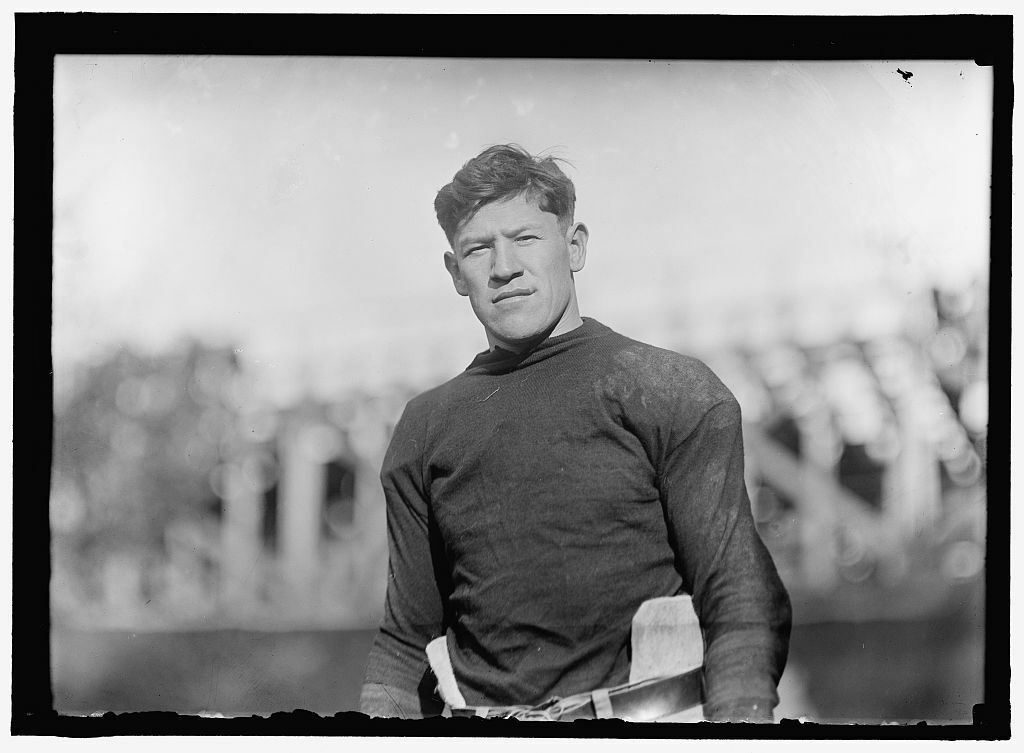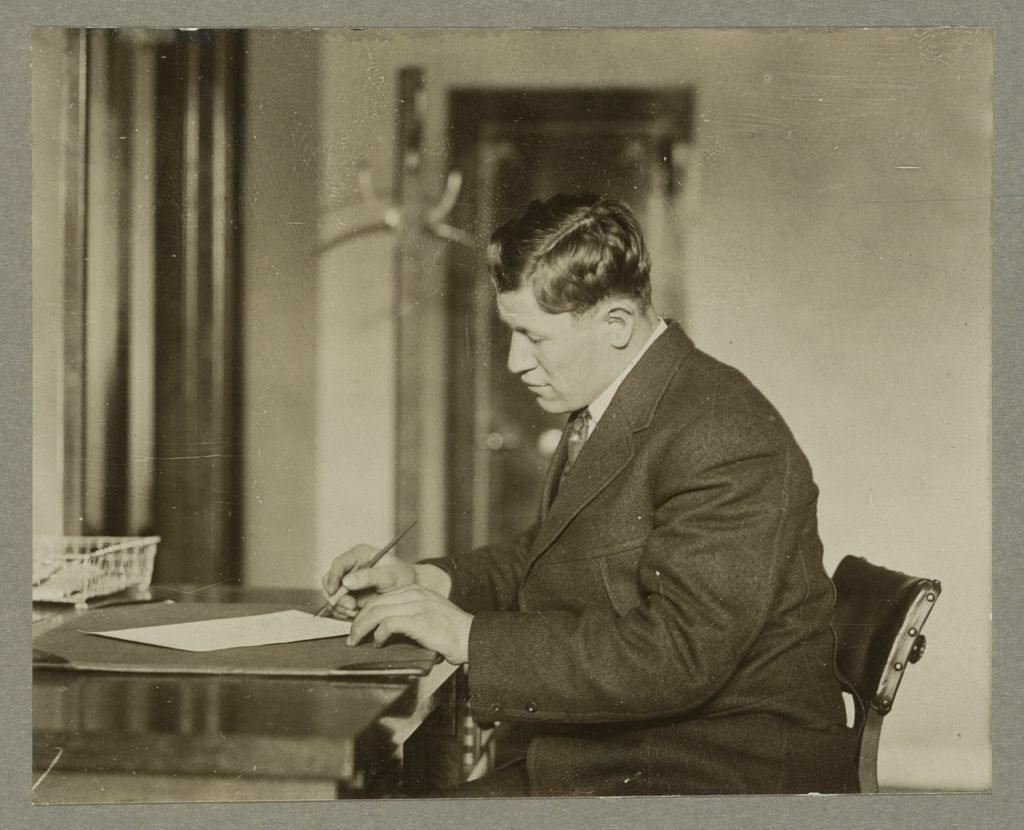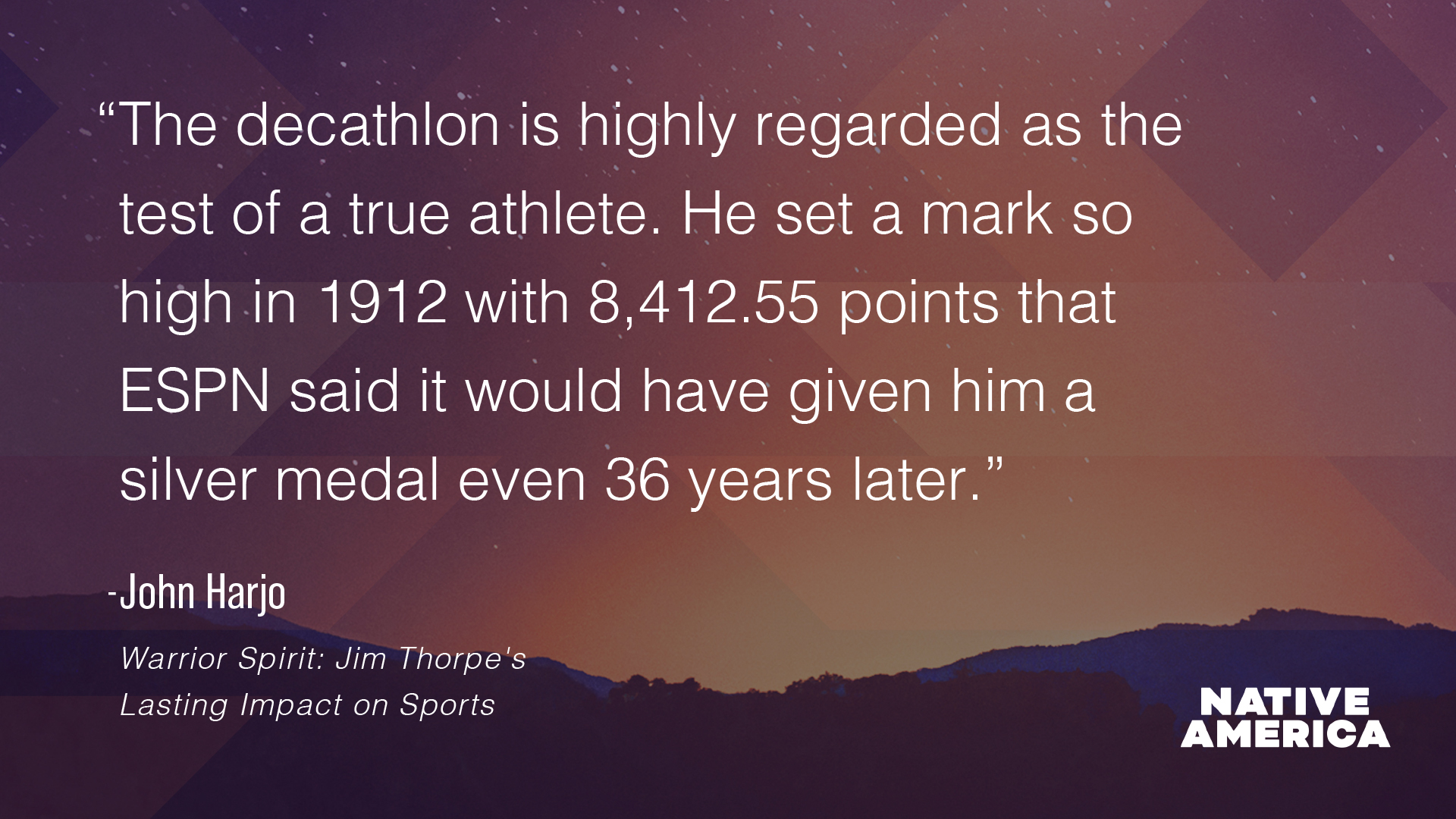Warrior Spirit: Jim Thorpe's Lasting Impact on Sports

Wa-Tho-Huk, also known as James Francis Thorpe or Bright Path, was born in most accounts in [1887 or] 1888. He was a member of the Sac and Fox and Potawatomi Nations. Jim Thorpe was a warrior; a warrior on the gridiron, a warrior on the track, and any other athletic arena he ever entered for that matter. Thorpe was and still is the greatest athlete in the history of sports.
In 1950 Thorpe was voted as the greatest athlete of the half-century by the Associated Press. [He won] 252 of 393 first-place votes. Babe Ruth had 86 votes and Jack Dempsey was third with 19 votes. As the years passed and with the integration and growth of radio and television Thorpe’s legacy was passed on how Native history and culture has been passed down through the centuries: through oral tradition.
Little to no film exists of Jim Thorpe. There are mostly just black and white still shots of him in his track and football uniforms or competing. One of the most famous of which is attributed to his Olympic endeavors where upon close inspection he is notably wearing two different socks and two different mismatched shoes. The story is, someone stole his socks and shoes right before he was to start competing. So, he dug out two different shoes from a trash bin and won gold while wearing those. A life full of adversity allowed him to overcome any obstacle placed in front of him.
Jim was big, strong, and durable. He was enshrined in the College Athletic Hall of Fame in 1951, the Pro Football Hall of Fame in 1963 (the initial inductee class), the Indian Athletic Hall of Fame in 1972, and in 1983 the Track and Field Hall of Fame. He is also in the Helms Professional Football Hall of Fame, the Oklahoma Hall of Fame, and the Pennsylvania Hall of Fame. He played baseball, football, lacrosse, basketball, and he competed in track and field. If those feats don’t convince you of his greatness, Thorpe was also the 1912 inter-collegiate ballroom dancing champion.
He began his athletic career for Carlisle in 1907 in street clothes jumping higher than any of the current track team high jumpers. He later won two gold medals in the 1912 Summer Olympics, one in the decathlon and the other in the pentathlon. Thorpe had never competed in the pentathlon before, and he never did again. The pentathlon includes: the long jump, javelin, 200m run, discus and 1500m run. Thorpe won FOUR of the five listed events. The only one he didn’t win was the javelin, which he placed third.

The decathlon is highly regarded as the test of a true athlete. He set a mark so high in 1912 with 8,412.55 points that ESPN said it would have given him a silver medal even 36 years later.
The decathlon includes: the 100 meters, long jump, shot put, high jump, 400 meters, 110 meter high hurdles, discus, pole vault, javelin, and the 1500 meter run. Jim also placed fourth in the high jump and seventh in the long jump. On top of all of those feats he also played in two exhibition baseball games at that same Olympics in 1912. When he won gold he was congratulated by King Gustav V of Sweden where the king told Jim, “Sir, you are the greatest athlete in the world.” Thorpe replied, “Thanks King.”
That same year he led the Carlisle Indian’s football team to a National Championship, all while scoring 25 TD’s and 198 points in a season. He was also an All-American halfback at Carlisle as well as a defensive back, punter, and kicker. His first year of college football he was a third team All-American, and he was an All-American another season as well.
He played baseball, either in the minors or the majors, for 20 years. He retired from football at the ripe old age of 41, which is normal for a kicker, but a halfback? He hit three homeruns in one game. Jim was a running back and an outfielder for the New York Giants. Confused? One was a pro football team the other a pro baseball team.
Thorpe was 6’1’’, 195 [pounds] back when normal people weren’t 6’1’’, 195 [pounds]. He was a highly paid member of the Canton Bulldogs who are recognized as the world champions in 1916, 17’, and 19’. In 1920 he was the first president of what is now called the NFL, formerly the American Professional Football Association.

As stated before, Thorpe was named the greatest athlete of the first half-century beating out Babe Ruth, who wasn’t even a close second. In 1950 not many people knew he was named the greatest football player of the first half-century as well, and was also named the greatest football player in history in 77’ by Sports Magazine in a national poll. Oklahoma honored him with his own day. The Postal Service honored him with a commemorative stamp. The Jim Thorpe award goes to the best defensive back in college football every year. The NFL’s MVP award is the Thorpe. He even has a town named after him in Pennsylvania.
In 1999 both houses of Congress honored Jim Thorpe by designating him as the Athlete of the Century, and in 2000 ABC’s Wide World of Sports honored him as their Athlete of the Century. Thorpe will forever be remembered as a warrior, but he should also be remembered as a king. A king of the gridiron, the baseball field, the basketball court, the track, and the ballroom. Thanks, King.



